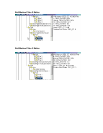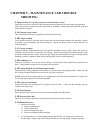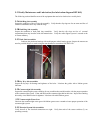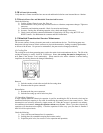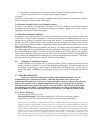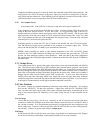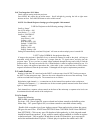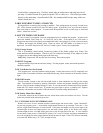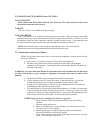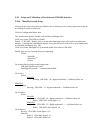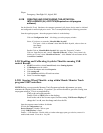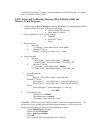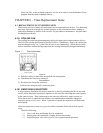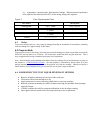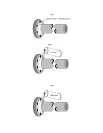NOTE! Command movement of the motor - If brake at rear of motor clicks it’s a faulty motor or
inverter. Problems can also be; Bad motor, bad or frozen gearbox, no power getting to the motor. If no
power is getting to the motor test at other side of the power pitch ring located above the power box.
Test power interface connections at the center weldment.
5-11A Unit Fails to Counter-Balance
Can be caused by faulty pitch encoder, pitch brake or brake solenoid failing to release pitch brake,
faulty interface board or motion control board in the CPU. The encoder can be tested by using another
axes encoder. All encoders are alike. Test interface to the CPU by moving platform in pitch mode
using the “Mitsubishi” interface test program. Platform storage stand spacing wrong at front and or rear.
With the counterweight making rear tail sit on the support the bubble must read level, if not adjust stand
accordingly. There should also be only a ¼” space between cockpit underside and the top of the front
storage rest stop. To test pitch encoder output at balancing point, raise unit to balancing point, stop
power (E-Stop in), read encoder on panel must be greater than 1 degree to make counterweight move.
5-12 PLATFORM LOWERED SENSER
This switch/sensor is located right side middle of inner A-frame located and set under lift jack tube.
Factory set but adjustable. Its function is to reset all encoders to zero at the completion of a cycle. Also
it triggers the CPU to release the pitch and roll brakes as unit touches down on its stand. It can prevent
the raising of the unit if faulty and prevent proper counterbalancing at raise cycle.
5-13 FAILS TO RAISE LEVEL IN PITCH OR ROLL
Normally caused by front stand spacing being further than ¼” from bottom of the cockpit area. This
will allow roll to not level. Adjust front stand to correct. If OK, could be imbalance of load i.e.: not
within the 100 pounds between left and right occupant. Loose encoder on the roll or pitch motor.
5-14 OCCUPANT SAFETY SWITCH,
Located in the cockpit between the two seats. Enables occupants to signal operator that they want to
stop the ride. When depressed, it will halt/pause the program, stop motion of unit, allow the unit to turn
to the home, level position. Operator lowers unit, asks for reason, if accidental locks cockpit, raises unit
clicks on resume icon and unit will finish the program. Switch is a normal ON/OFF type switch and not
adjustable. Can be tested in setting pages or on Monster Trucks in Joystick pages.
5-15 UNIT STOPS MOTION
Canopy sensor activated by either canopy latch releasing, faulty switch or damaged switch dirty slip
rings. When the switch activates, it will stop motion immediately and freeze the program running on
the TV. An alert condition will show on CPU monitor. Operator must depress the E-STOP, removing
power to all the motors. Manually level all axes and manually lower the unit to the down position. Exit
all occupants and have maintenance repair and test the unit before allowing further rides.
5-16 NO ROLL OR PITCH MOVEMENT WHILE ON TOP
If motion in an axis is slow or erratic it is due to a faulty brake release for that axis. Test the inverters
and brakes in the manual mode. If brake is released and movement is still erratic it is usually a bad
inverter. A faulty up or canopy sensor that is intermittent, will allow erratic motion. CPU program
going to freeze frame operation will allow erratic motion. This can usually be corrected by going out of
the program, defrag the disk and go back to running.
5-17 UP SENSER FAULTS
Unit raises normal, balances, goes to the top and program freezes. No platform motion. Alert
condition “ Platform was raised but does not see the up sensors”. At the present there is no place in the
CPU pages where you can monitor these switches to see if logically the CPU sees them. Test the old
fashion way by continuity tests and voltage tests. Test at interface board across terminals for each
switch. If voltag4e goes from zero to 5 VDC then the CPU is supplying power to them but you do not
know if the CPU motion card or CPU program can read these signals. Test cables, replace motion card
to isolate the problem. Could be faulty ribbon cable to the interface board.



